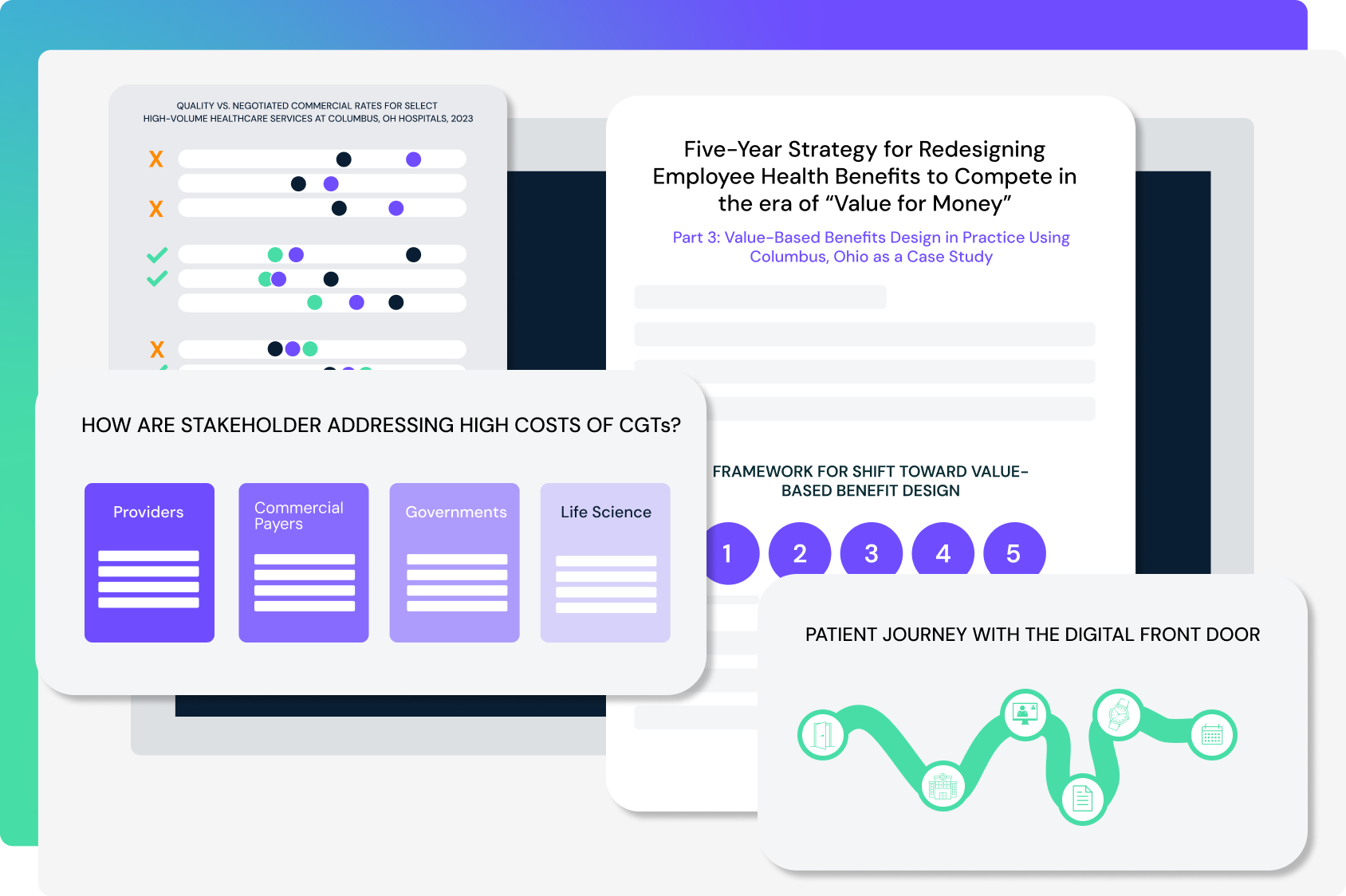2021 Trends Shaping the Health Economy Report
Trilliant Health's inaugural 2021 Trends Shaping the Post-Pandemic Health Economy Report reveals several macro trends impacting the $4T health economy, backed by more than 120 data stories.
- The Health Economy
- Demand
- Supply
- Yield
- Conclusion
- Methodology
Report Summary
This inaugural report aims to persuade longstanding players in the health economy to re-examine their longstanding assumptions about the basic economics of their business. As healthcare executives begin developing strategies to guide their organizations in a health economy recovering from the global COVID-19 pandemic, insight into the demand, supply and yield equation will help to distinguish between commonly held anecdotes and the data-informed truths.
This report is a fact-based, data-driven analysis of the trends that will define the landscape, and subsequent challenges, for all players in the post-pandemic health economy.
Key Takeaways
- Future demand for healthcare services is flat to declining, with an average rate of growth for surgical services ranging between 0.7% to 1.9% year over year through 2025.
- Telehealth’s peak-pandemic high has already begun to taper with the rate of decline ranging from -37% to -3% depending on the state. Delineating between total telehealth visits and the discrete number of unique individuals who used telehealth, the research concludes that only about 13% of Americans used telehealth during the pandemic.
Methodology
A variety of data sources were leveraged as part of this research, with most insights gleaned from Trilliant Health’s proprietary datasets with visibility into patients and providers across the country. Trilliant Health’s national all-payer claims dataset combines commercial, Medicare Advantage, traditional Medicare and Medicaid claims, which provides a nationally representative sample accounting for more than 300 million American lives on a deidentified basis. Trilliant Health’s consumer dataset includes a range of psychographic (e.g., behaviors, preferences), demographic, social determinants (e.g., broadband) and lifestyle (e.g., wearable) data, inclusive of variables sourced from third-party datasets.
Trilliant Health’s Demand Forecast leverages General Linear Mixed Models (GLMMs) in combination with more than 100B rows of claims data to project future demand for healthcare services over a 5- and 10-year horizon. Trilliant Health’s Provider Directory enables a direct view into providers and their practice patterns.
Additional data were obtained from a variety of public sources, including individual company financial statements, Census Bureau, Kaiser Family Foundation, the Congressional Budget Office, American Hospital Association, American Medical Association, Centers for Disease Control and Prevention, Healthcare Cost Report Information System and the Bureau of Labor Statistics.
Trilliant Health’s Demand Forecast leverages General Linear Mixed Models (GLMMs) in combination with more than 100B rows of claims data to project future demand for healthcare services over a 5- and 10-year horizon. Trilliant Health’s Provider Directory enables a direct view into providers and their practice patterns. Trilliant Health’s health plan price transparency dataset is comprised of health plan machine-readable files that have been parsed, then analyzed in combination with the Provider Directory to reveal the negotiated reimbursement rate between any health plan and any provider for any service rendered at any location.
Additional data were obtained from a variety of public sources, including individual company financial statements, Census Bureau, Kaiser Family Foundation, the Congressional Budget Office, American Hospital Association, American Medical Association, Centers for Disease Control and Prevention, Healthcare Cost Report Information System and the Bureau of Labor Statistics.
About the Author

Compass+
Track the latest developments across the health economy.
Subscribe to Compass+ for additional analyses, market-specific trends, ongoing tracking throughout the year and more. With a subscription, you will receive:
- Tailored analysis and health policy insights
- Interactive data dashboards to track trends
- Executive commentary and perspectives
- A slide library to inform internal presentations